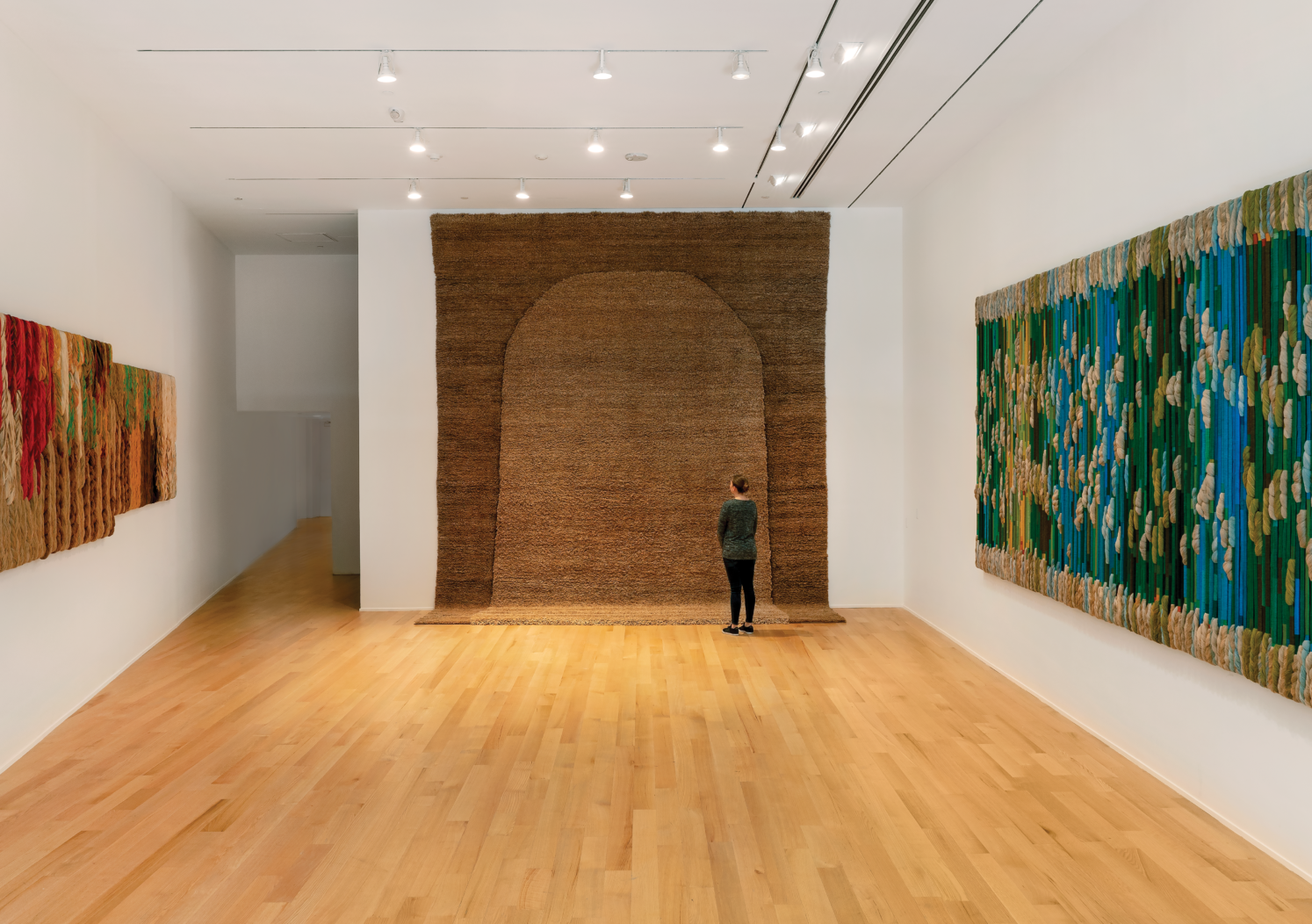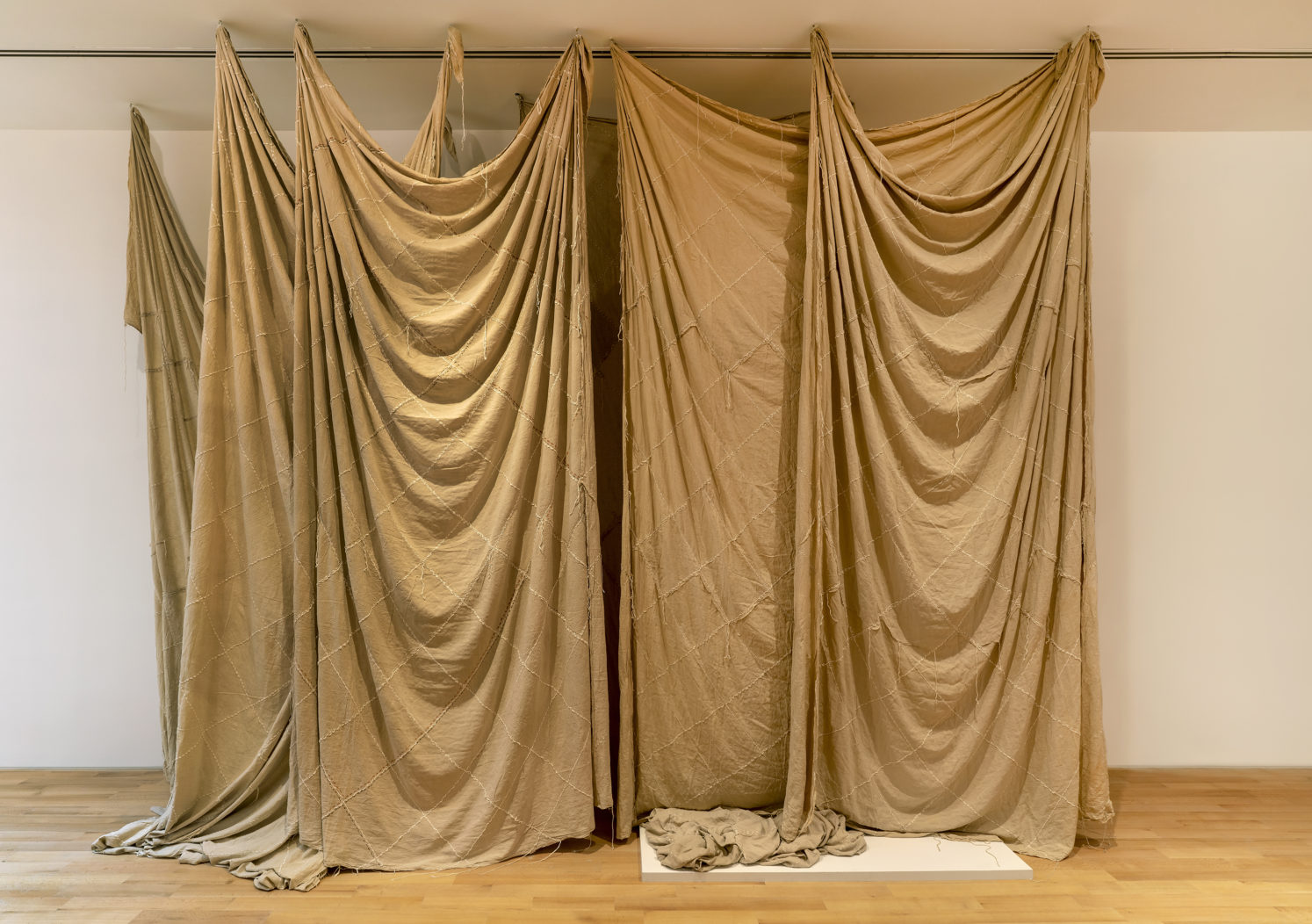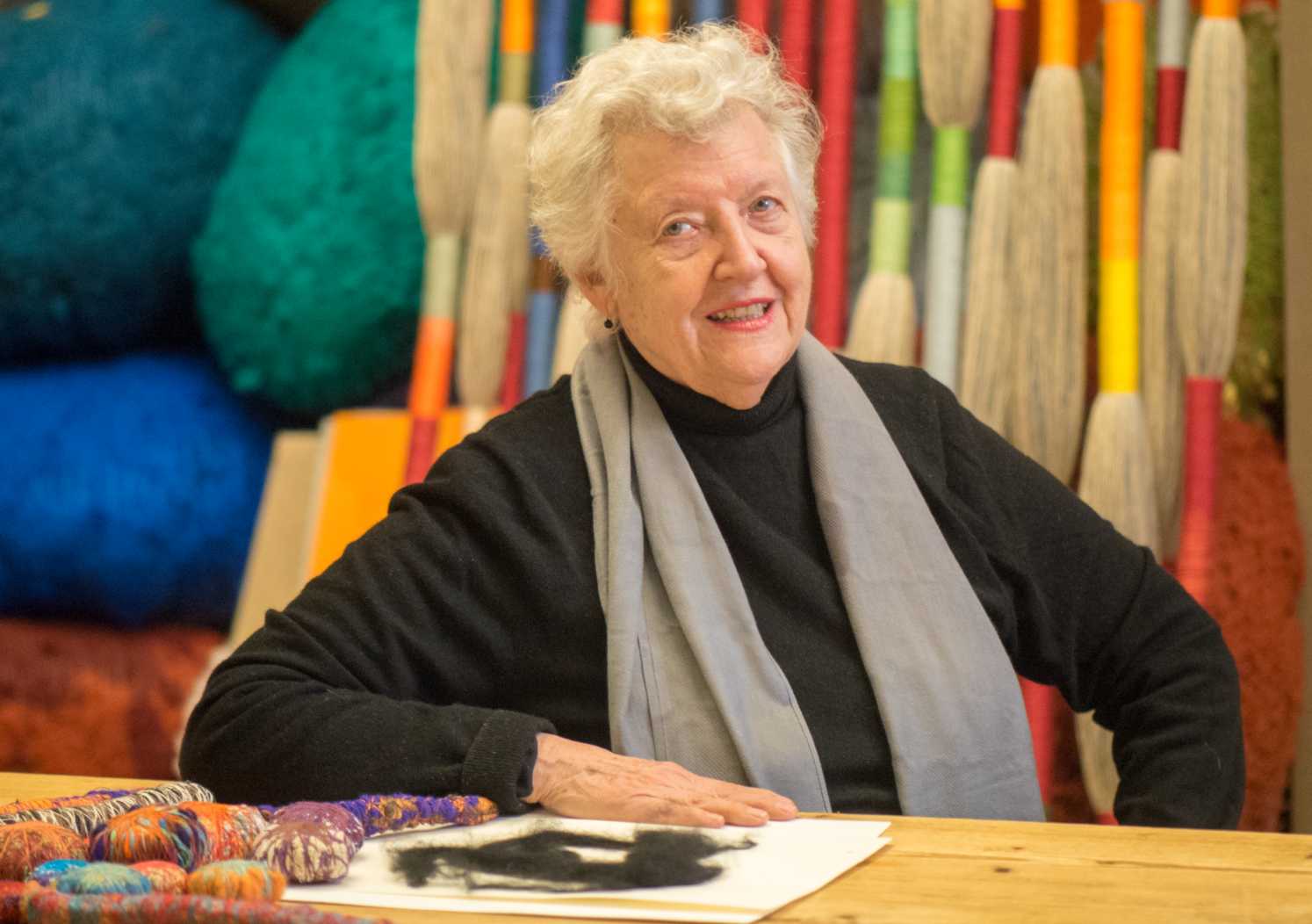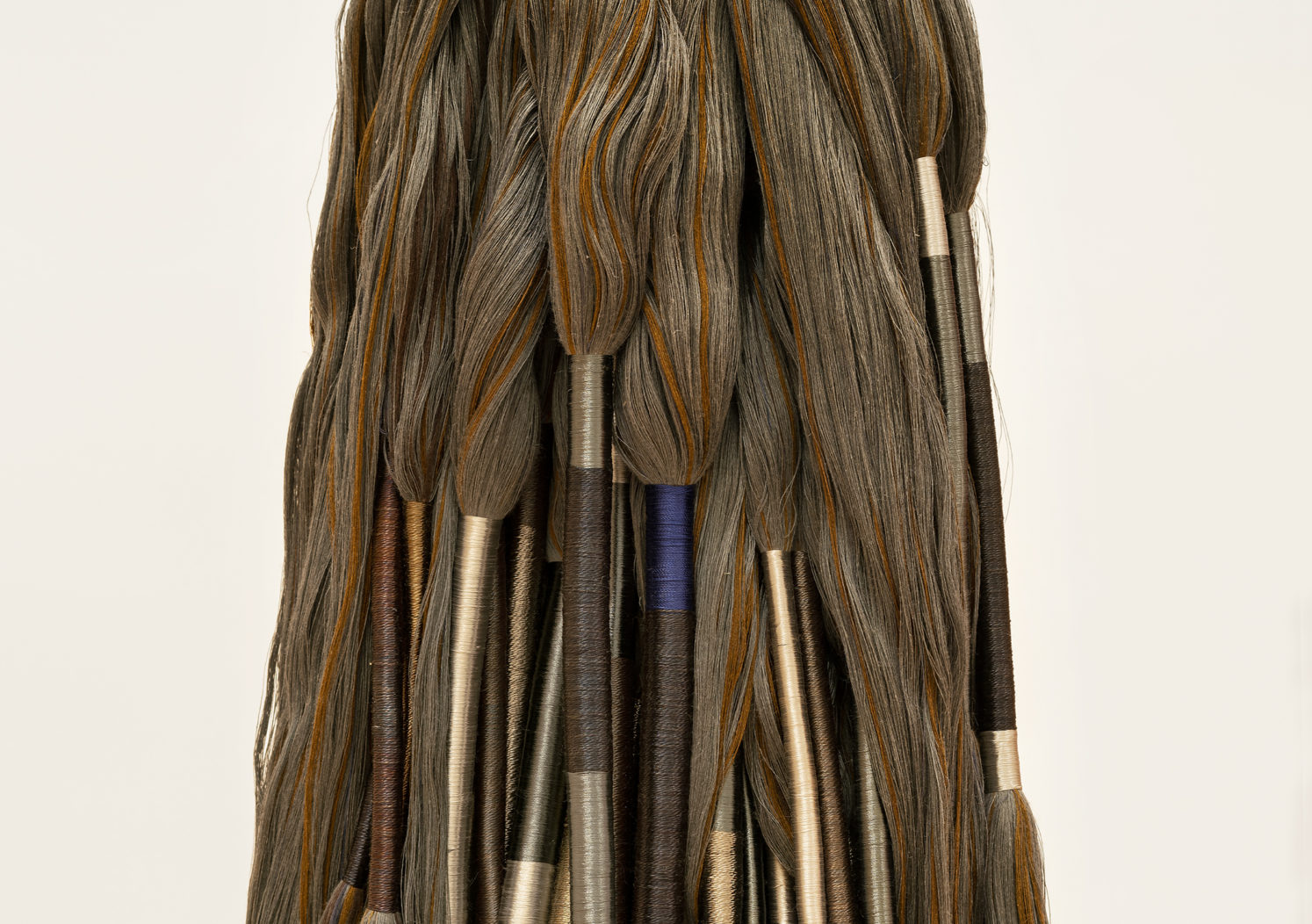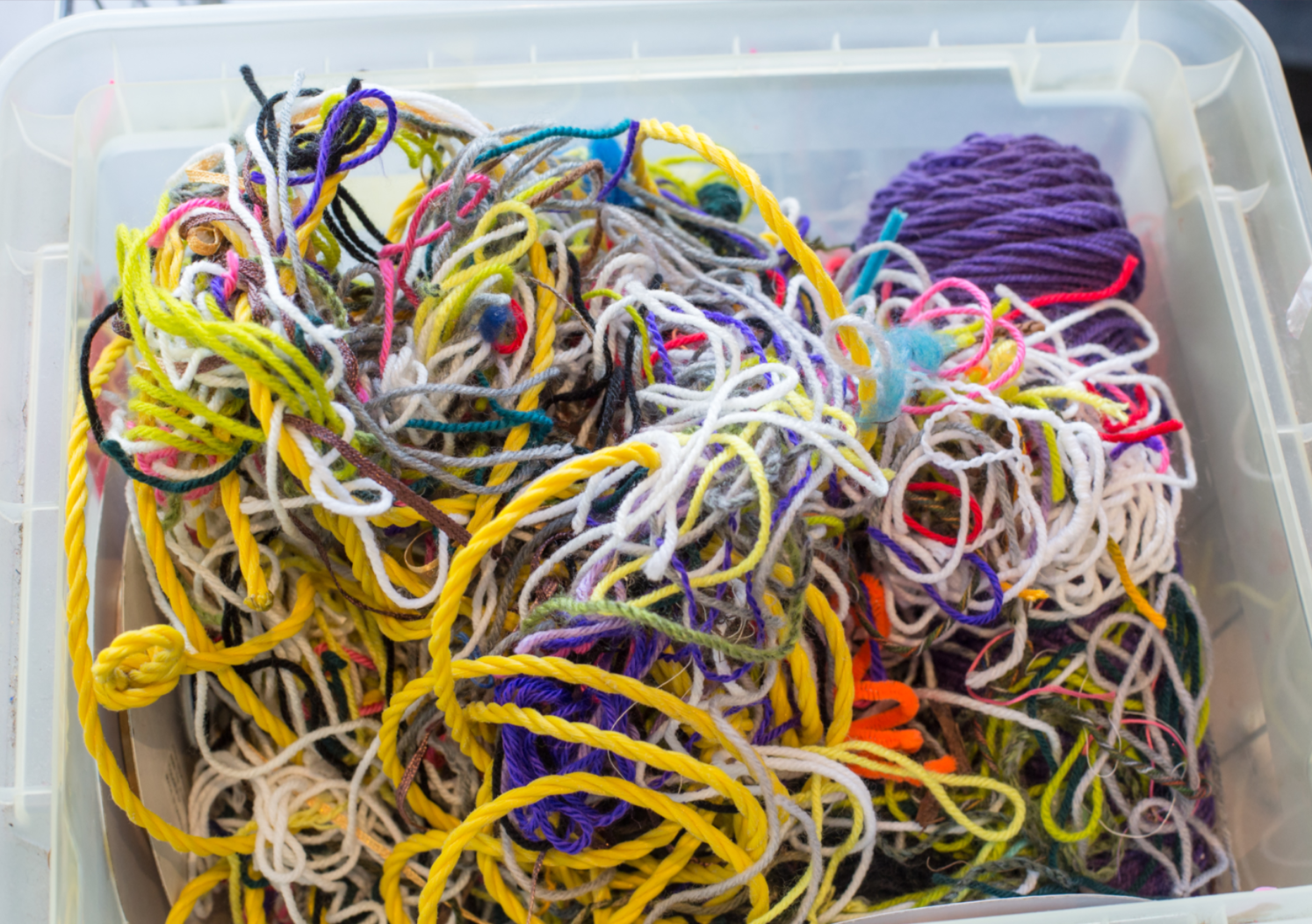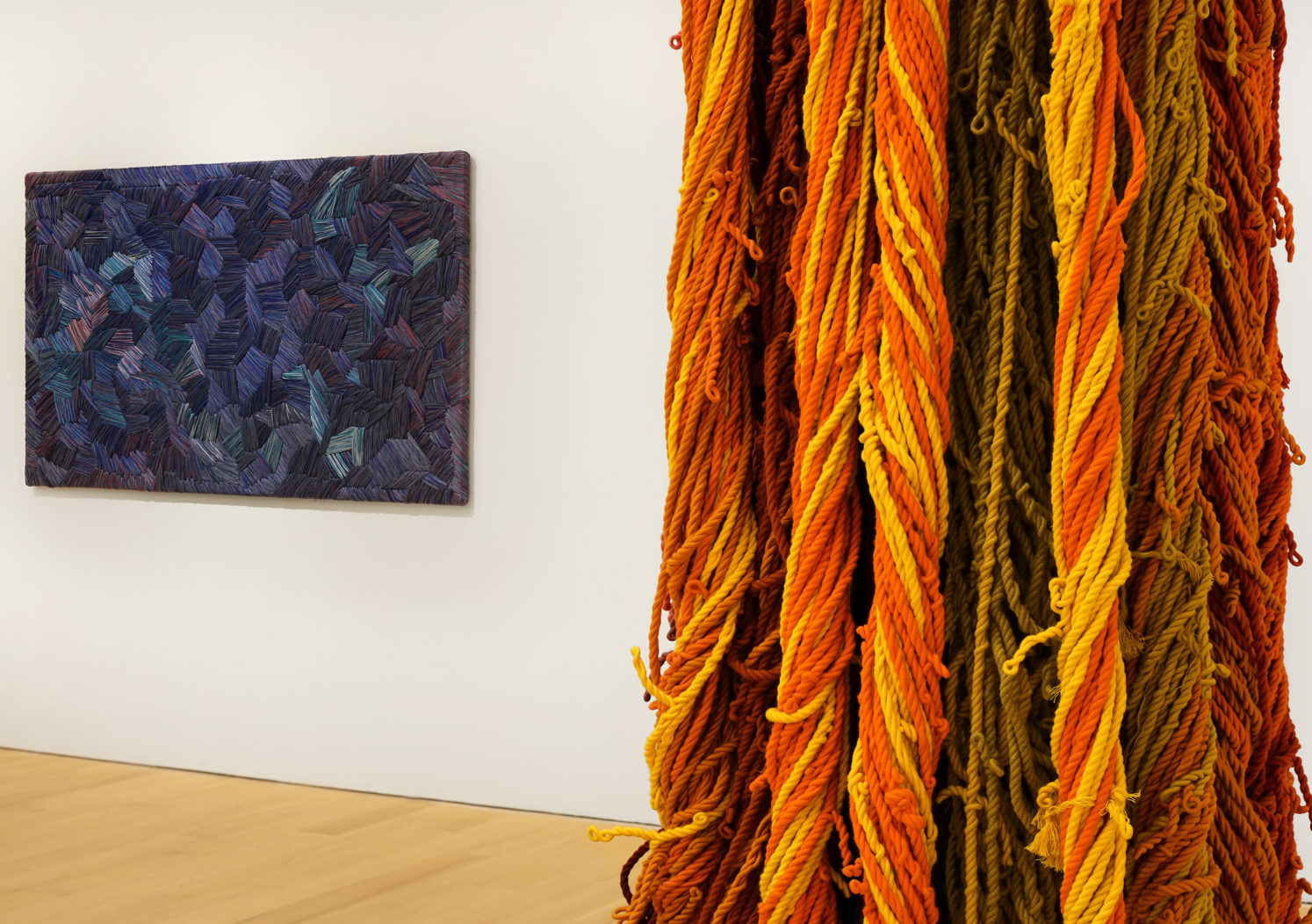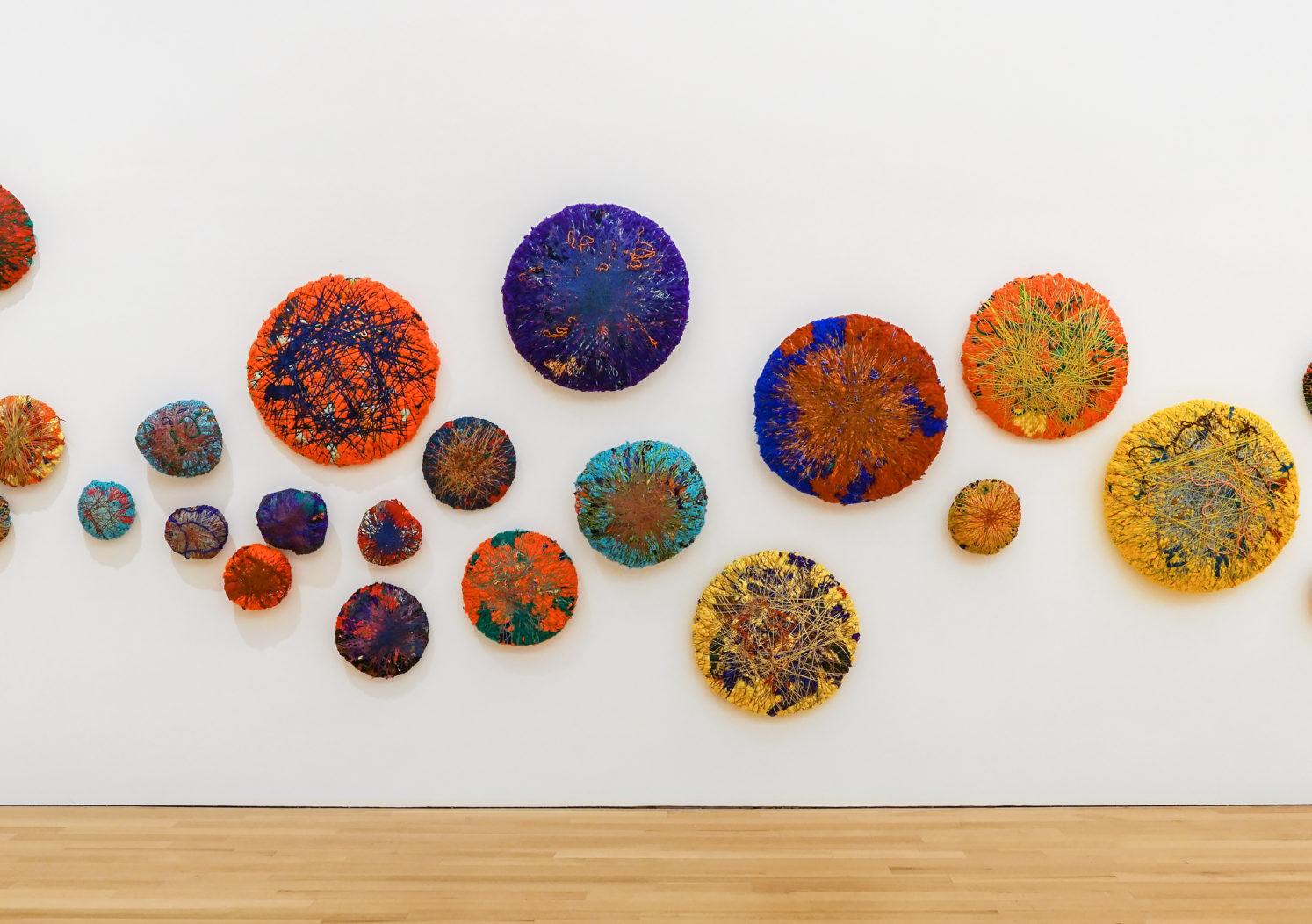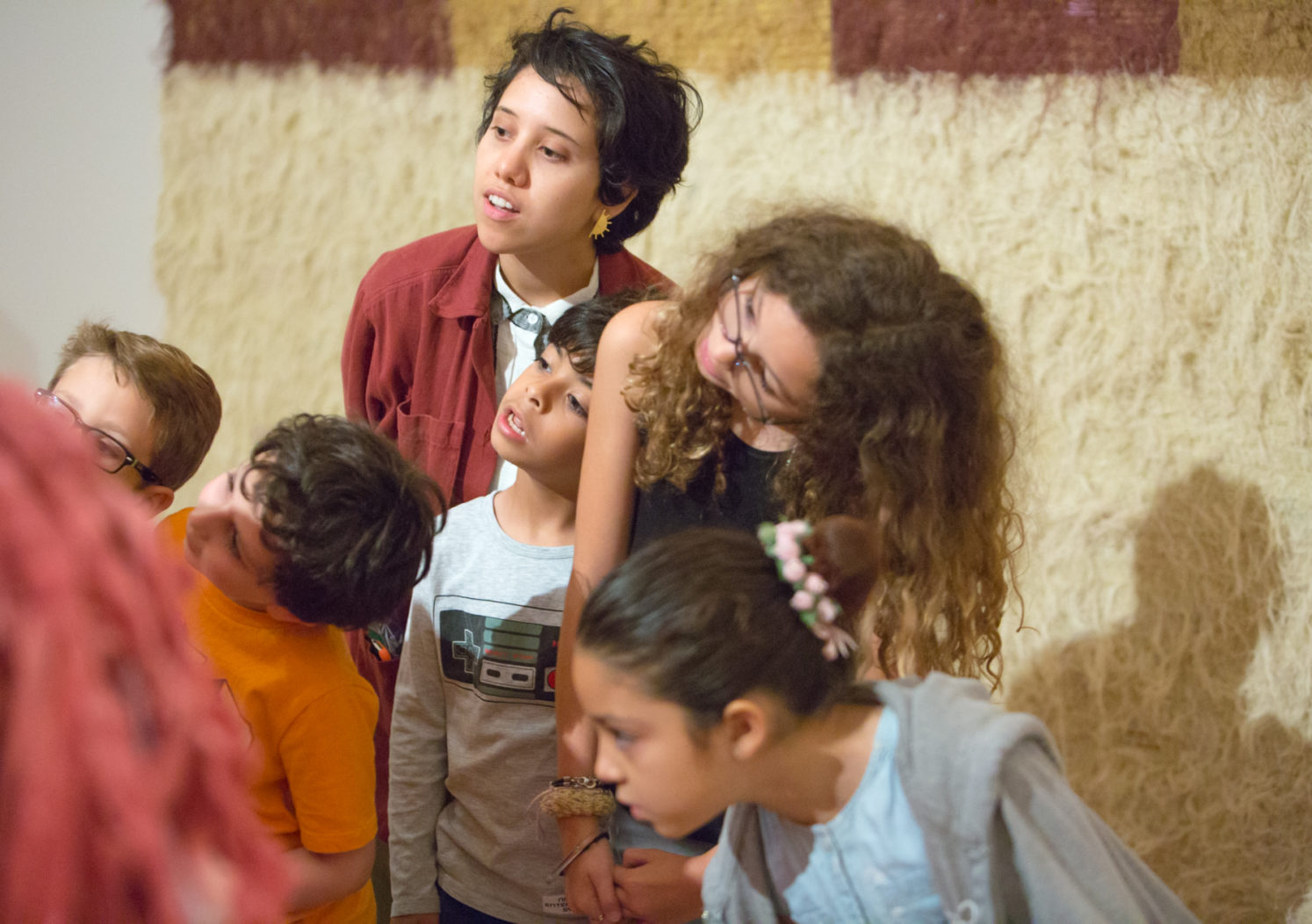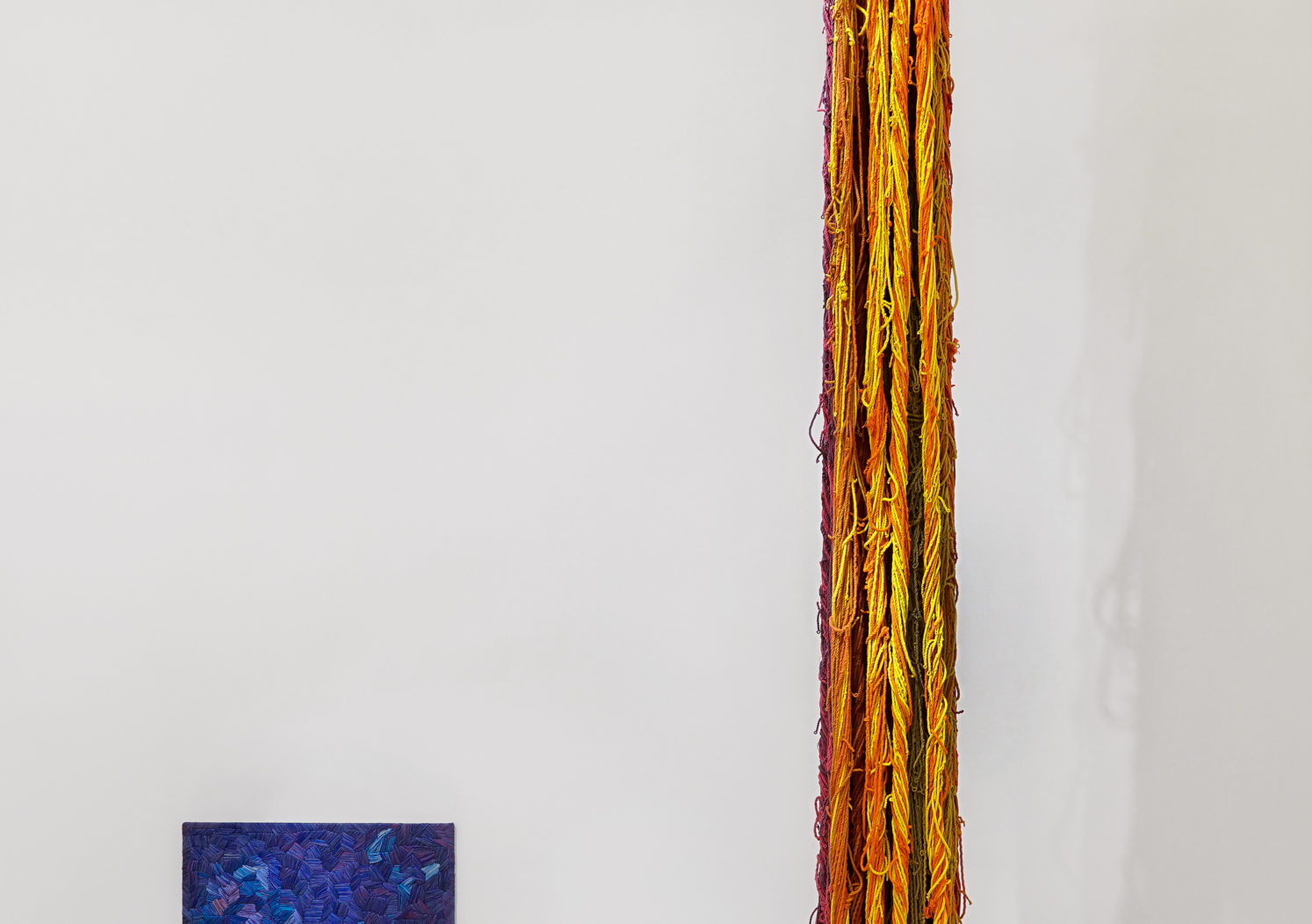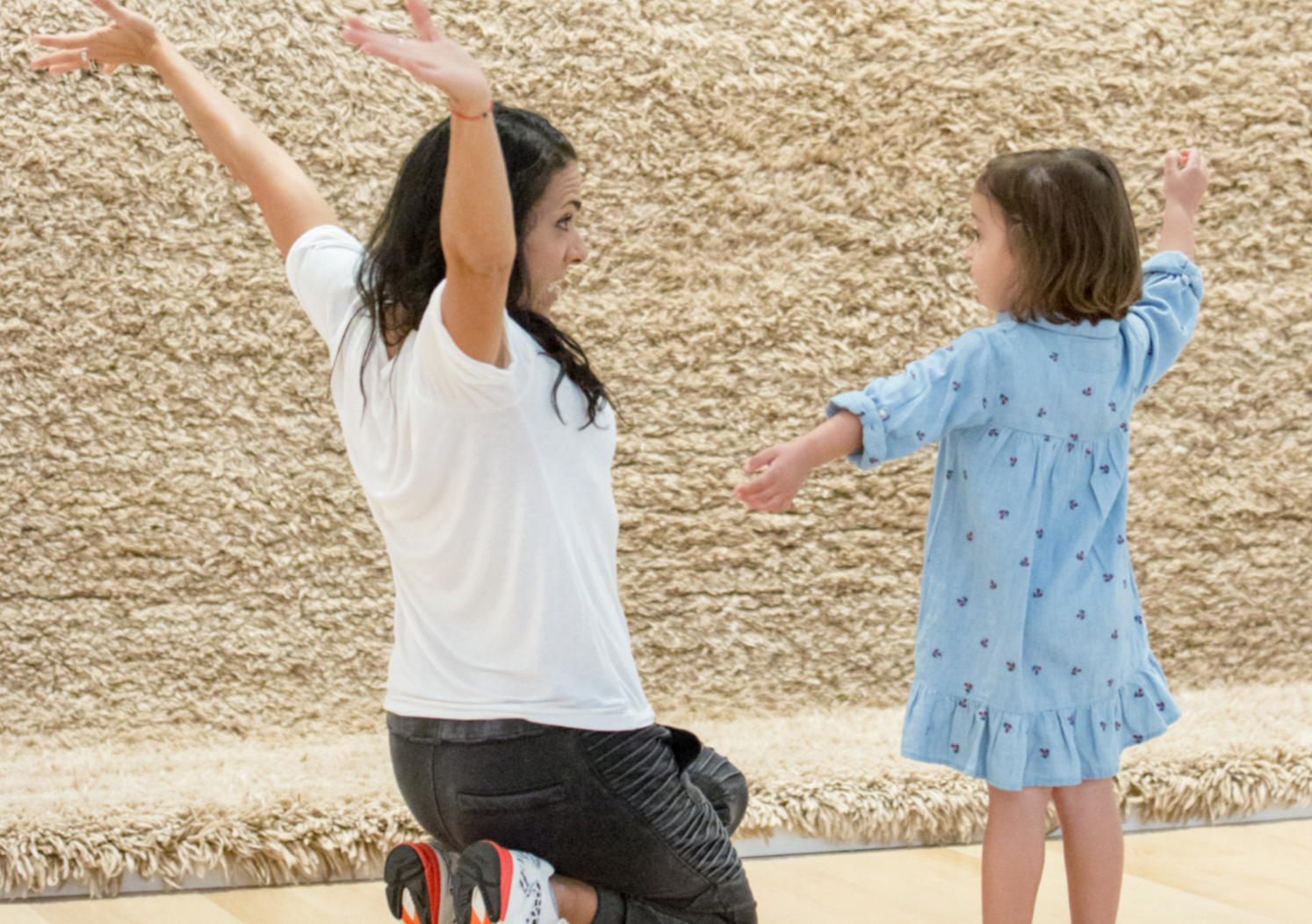Sheila Hicks Weaving: Ojo De Dios
IDEAS DESIGN CHALLENGE
Inspired by Sheila Hicks: Campo Abierto (Open Field)
* Tip: Read this whole lesson plan before you get started so you can see how the plan will evolve.
Lesson Duration: 45 minutes – 1 hour
MATERIALS
- Multiple yarns in various colors*
- Scissors
- A pair of straws or skewers
- Optional: popsicle sticks, toothpicks, skewers, forks, spoons and other tools found around the house to create different textures with your sculpture.
*For those with limited resources you can complete this activity by also using twine, shoelaces, or string. If you do not have straws or skewers at home you can grab some branches or sticks from outside.
Vocabulary:
A loom is a tool used to weave cloth and tapestry. The basic purpose of any loom is to hold the wrap threads under tension to facilitate the interweaving of the base threads. The precise shape of the loom and its mechanics may vary, but the basic function is the same.
Repetition refers to one object or shape repeated; pattern is a combination of elements or shapes repeated in a recurring and regular arrangement; rhythm-is a combination of elements repeated, but with variations.
BEFORE YOU BEGIN
Watch the following video about Sheila Hicks’ exhibition at The Bass and her use of materials.
You can also learn more about Ojo De Dios and other examples of this project with the following videos:
DIRECTIONS
Prep
Create a loom. Gather two plastic straws. Have them cross over one another, overlapping at the center. Staple the center of the straws to hold them in place.
Alternative option: If you can’t staple the straws together you can carefully hot glue or tape the center. It’ll be covered by your work. The purpose is to create a loom to weave around, so you want to be sure your straws are secured at the center.
STEP 1
Tie the end of your yarn to the center of the loom, creating an anchor at the center.
STEP 2
Always going around the same order of the straws, begin wrapping your yarn
Tip: You can mark the straws with 1, 2, 3, 4 … The numbers will be covered up in the end but may make it easier for younger guests to keep track of what they’re doing.

STEP 3
Wrap the yarn once around 1, once around 2, once around 3, once around 4.
STEP 4
Continue on, once around 1, once around 2, etc. repeat this sequence until you’re happy with the first layer of the “eye”.
STEP 5
Snip the first color of yarn and tie on a second color. Continue with the second color and then a third, fourth and fifth.
STEP 6
Add tassels, beads and knots to make your piece unique.
You did it! Now hang your Ojo De Dios as decor in your house. Share your artwork with us by taking a picture of your creation and tagging @BassCreativityCenter and #BassCreativityCenter.
STEAM CHALLENGE
After completing this activity carefully try to spin your piece on one of its sides. Was it able to spin? Count how many 360 degree spins your piece is able to complete.

Ask others at home to try and spin your piece, complete the chart below to record the different outcomes. Was there a different outcome when someone else tried? Do you think it would spin faster or slower if your piece was heavier? Do you think it would spin more if your piece was smaller? Now try to find other things you can spin in your house and compare the weight, and size of those objects. What shape is it? Grab a stop watch and compare the different objects to see which item can spin the longest.

When it’s spinning, the art piece balances on the tiny tip of the loom. This minimizes the amount of friction generated by its contact with the surface below it. Eventually, though, friction will begin to slow the tpiece’s spin. When this occurs, the art piece begins to wobble, demonstrating a scientific principle called precession.
LEARNING BENEFITS
Weaving helps develop hand-eye coordination by encouraging children to use the visual information received to coordinate the movement of the hands. Weaving requires concentration, usually causing silence as you move the material between looms. Most artists consider weaving as a form of meditation or relaxation.
ADAPTATION FOR YOUNGER ARTISTS
Have an adult help staple or hot glue both looms prior to starting this activity. Start by anchoring the string, and showing the young artists the first few steps, then hand it off to them to try. Once it comes time to switch yarns assist with tying the knot and getting them started on the new strand.
ADAPTATION FOR OLDER ARTISTS
Rather than creating a loom with just two straws, why not try one with three or four? You can also incorporate different materials like beads to your yarn as you weave.
ADDITIONAL RESOURCES
- Learn more about Sheila Hicks’ exhibition Campo Abierto (Open Field)
- Complete more activities like this inspired by Sheila Hicks
- Visit Sheila Hicks’ website
Be sure to share your artwork by taking a picture of your project and tagging @BassCreativityCenter and #BassCreativityCenter.

